The San Sebastiano Diocesan Museum in Cuneo celebrates its first ten years of activity: it was in fact September 29, 2012, when it opened its doors to the public in Contrada Mondovì, although its history began in 2000, with the restoration of the building, the study of the collections and the layout. On the occasion of its 10th anniversary, the museum is organizing various initiatives for the month of September to make its halls even more a place for meeting, sharing and inclusion. On the weekend of Sept. 16 to 18, visitors can enjoy an interactive musical installation spread throughout the halls, specially created by Cristina Mercuri, an electroacoustic musician and composer, to enhance the spiritual and cultural richness of the museum (the installation is also made possible thanks to the support of TargatoCN). The following weekend, Sept. 23-25, is scheduled Museum for All, a project dedicated to inclusion and accessibility for all, in line with the latest projects developed by the museum. Specifically, on Friday, September 23, from 6 to 10 p.m., there will be the opportunity to participate in a special Visit in the Dark, divided into small groups, blindfolded, accompanied by volunteers from the museum and the Cuneo section of the Italian Union of the Blind and Visually Impaired (to which free donations collected from participants will be allocated); Saturday, September 24 and Sunday, September 25, at 4 p.m., two workshops designed for children aged 6 to 12 will introduce them to the Italian Sign Language with the workshop Parlare con le mani and to the language of CAA - alternative augmentative communication - with the visit The Universal Language, which will run along the path created as part of the project The Museum in the Suitcase. Wednesday, Sept. 28, will close the festivities with a Mass celebrated by Bishop Piero Delbosco, bishop of Cuneo and Fossano, to be held at 6 p.m. at the Church of San Sebastiano, followed at 8:30 p.m. by a concert by the students of the “Bianchi-Virginio” High School of Music of Cuneo. On Thursday, Sept. 29, the patronal feast of St. Michael and the anniversary date, the museum will be open extraordinarily from 10 a.m. to 1 p.m. and from 2 to 6 p.m. All initiatives are free with compulsory reservations through Eventbrite at the links available at www.museodiocesanocuneo.it; they are made possible thanks to the contribution of the Italian Bishops’ Conference and Fondazione CRC, thanks to the support of La Guida and TargatoCN, and under the patronage of the Italian Ecclesiastical Museums Association and the City of Cuneo.
Located a stone’s throw from the historic center, in Contrada Mondovì, the current museum is located in part of what used to be the living quarters of the ancient Confraternity of St. Sebastian, whose income maintained the institution after the continual confiscations and disbandments of the 19th century, as the confraternity sold all its assets before dissolution and gave the proceeds to the bishop, who bought back the auctioned property and reformed the entire building, converting part of it into income housing. With the slow depopulation of the old town and the decline of the confraternity, the building and church came into a state of disrepair after World War II, and by the late 1980s they were reduced to a static risk, the church opening only on certain annual holidays. However, it was from the year 2000 that plans were made to open the headquarters of the diocesan museum here, thus beginning to plan the restoration of the entire complex, which was completed in 2011. In addition to the structural aspect and plant engineering, the frescoes of the church and the entire historical-artistic heritage were restored. Finally, the set-up was designed and carried out to reach the official opening on September 29, 2012: a long intervention of recovery, adaptation of the rooms and set-up that was made possible thanks also to the economic commitment of the Diocese, in collaboration with the Piedmont Region, the Foundations Cassa di Risparmio di Cuneo, of Turin, of the Compagnia di San Paolo and with numerous public and private institutions in the area.
The aim of the museum and the displays is to help reread the territory’s past, passing through the devotions of the ancient Confraternity, from its medieval dedication to St. James to its merger in the 16th century with that of St. Sebastian, protector against the plague. In the Baroque period, the cult of Our Lady of Mount Carmel becomes very present; in the nineteenth century the Confraternity looks to both ancient and contemporary saints that indicate to it the new urgencies of the time and collects works of the suppressed orders. The passage of Pius VII finally marks the establishment of the Diocese of Cuneo and thus the new ecclesial reorganization.


The tour begins with the immersive room in the powder magazine: it starts from December 5, 254, when the pilgrimage of Saint Dalmazzo, the first evangelizer, ended with his martyrdom. The first Christian proclamation causes a vast territory to expand here, which is divided into parishes and religious and lay communities, until today, through the establishment in 1817 of the diocese of Cuneo. Over the centuries, the structures changed to adapt to the needs of the city: to cope with the seven sieges, which Cuneo withstood, religious buildings were also used for defense, such as this underground powder magazine carved out under the sacristy. After the immersive introduction, we enter the Hall of St. James, a saint symbolic of pilgrimage, an activity considered since antiquity as a source of spiritual and cultural wealth. Paintings considered part of apostolates, that is, images of Christ and the twelve apostles, are displayed here: the 1673 inventory documents in St. Sebastian’s “two apostolates, that of Rome with walnut frames with profiles No. 14 and the other of Bruno with new frames all gilded No. of 16,” and it is likely these exhibits are from both. There is a St. Bartholomew, a St. James the Greater, a St. Jude Thaddeus, a St. Thomas and a St. Andrew. Also on display is an 18th-century processional banner from the Cuneo area: it depicts all the devotions that took place within the Confraternity, namely St. James and St. Sebastian at the feet of Christ Crucified on one side and Our Lady of Mount Carmel with the Purgatory Souls on the other.
The most important piece in the Chapel of Relics is the case Reliquary of St. Fabian, made of carved, carved and gilded wood, dating back to the 17th century of Piedmontese ambit. The Confraternity had obtained it from Rome in the absence of the relics of St. Sebastian. A document records it as early as January 1656 as “cascietta for the interposition of the Holy Relics of the glorious martyr St. Fabian.” It is, however, the precious gift of a confrere, the quality of which testifies to the devotion to the relics of the martyr saint. The Hall of Saint Sebastian follows: the presence in the city of devotion to the patron saint against the plague is attested by sources as early as 1431. In 1628 Giovanni Antonio Molineri was commissioned to create sixteen paintings dedicated to the life of the saint, but the artist died precisely because of the plague in 1631, and the commission therefore passed to foreign painters who were in the city. The paintings, solicited for their completion in 1637 for the saint’s feast day, are traditionally attributed to the sphere of the Bruno brothers. They are works that recount some of the most important stages in the saint’s life, from his birth to his important military career, his conversion of numerous important figures in Imperial Rome, and his martyrdom. A number of them are on display here.
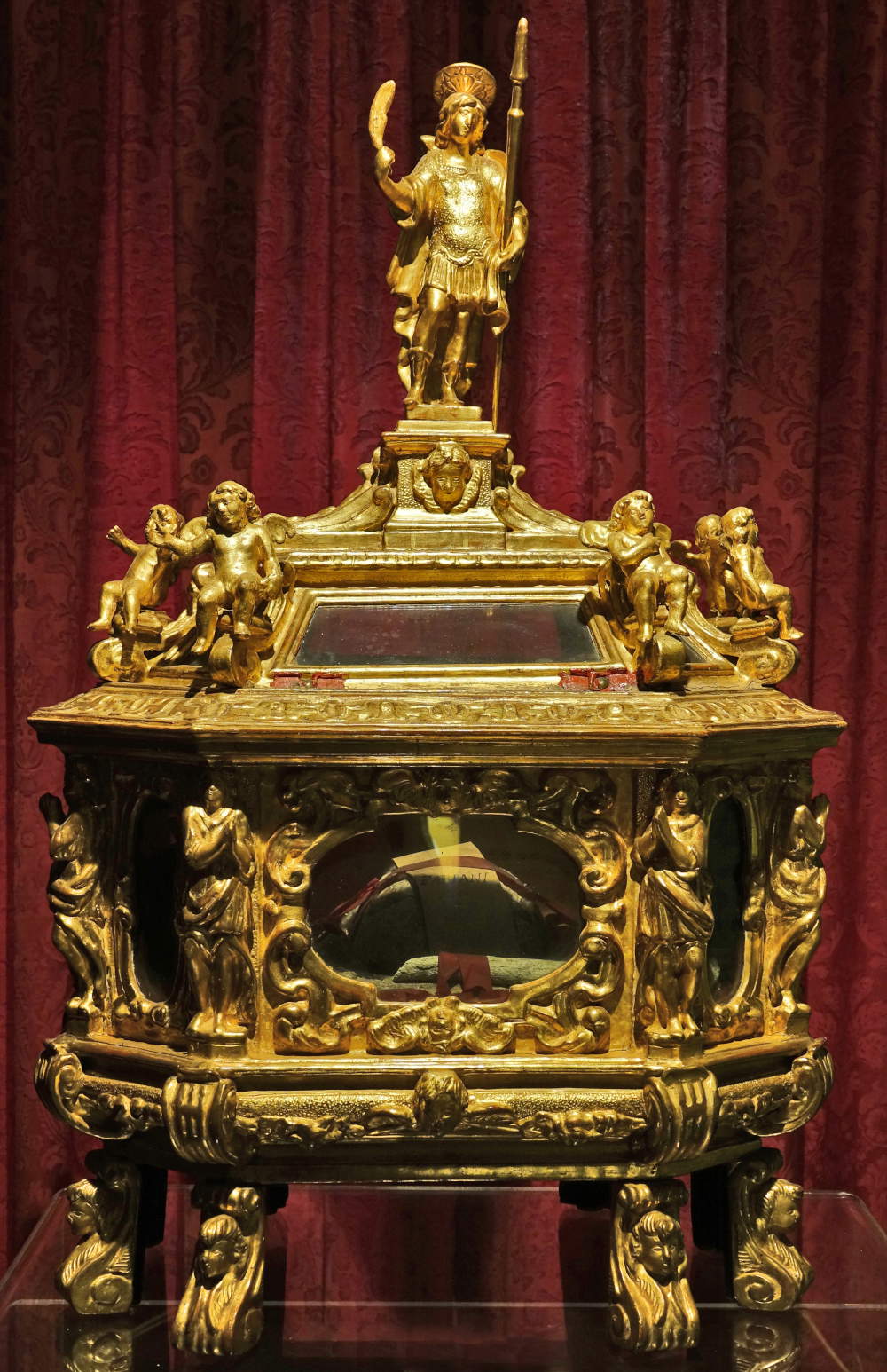
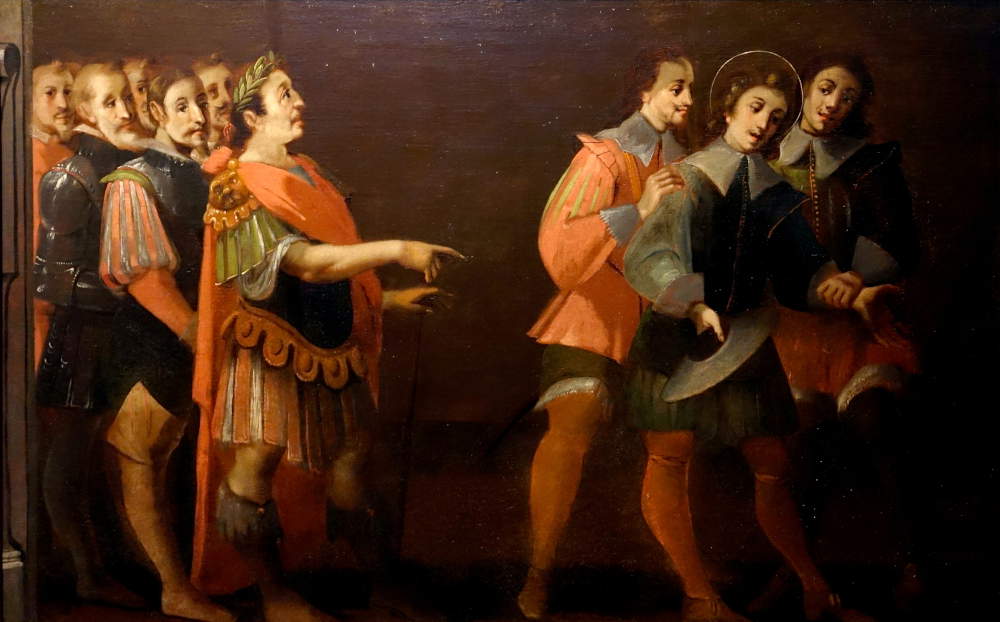 Ligurian
Ligurian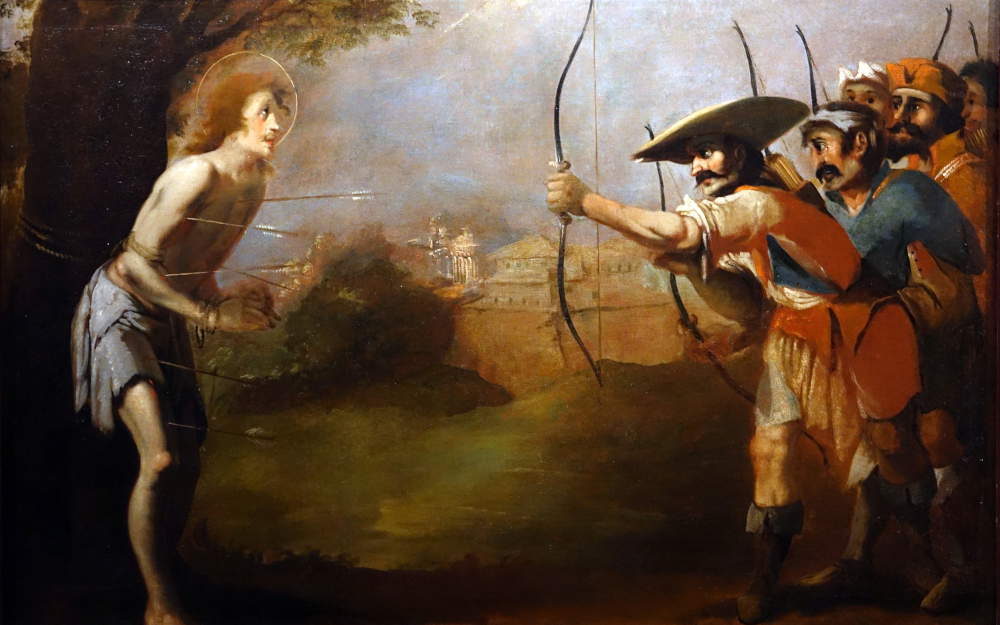 Ligurian
LigurianDevotion to Our Lady of Mount Carmel, to whom the next room is dedicated, is particularly heartfelt in Cuneo, with a solemn procession every year on July 16. It is attested in the Confraternity of St. Sebastian from 1606, the year in which the company was founded: at the beginning of the 17th century, in fact, the Confraternity commissioned the painter Guglielmo Caccia known as Moncalvo to make two processional banners, the first of which, “for the solemn procession” with the figures of Our Lady of Mount Carmel, St. Sebastian and other saints, was finished at the end of 1606. Then there is the Our Lady of Sorrows dating from the 18th century: this is a dress image in which only the visible parts (hands and face) are finished and painted, while the rest is a sort of mannequin. The dress is probably an evening gown offered as a gift to Our Lady by a devotee.
We then move on to the Nineteenth-Century Room, which displays two large canvases depicting theLast Supper and the Last Judgment made between about 1660 and 1662 by Giovanni Claret, a native of the Netherlands but resident in Savigliano and an exponent of Piedmontese naturalistic painting. The two canvases come from the Carthusian Monastery of Pesio, where, according to sources, they hung on the walls of the church as part of a cycle of ten paintings, of which they are the only surviving ones, depicting episodes from the life of Christ. After the Room of Ephemeral Apparatuses, we come to the Catwalk with works such as the Madonna and Child with Saints Eligius and John the Baptist made by Giulio and Giovan Battista Bruno in the first half of the 17th century and theImmaculate Conception and Saints by Sebastiano Taricco from around 1680. The Hall of the Diocese commemorates when Pope Pius VII arrived in Cuneo on August 12, 1809, and on July 17, 1817, the same pontiff proclaimed the birth of the Diocese. Finally, visitors have the opportunity to see the Council Hall, which was used both for meetings of the Confraternity Council and as an archive; a function that was maintained until a few years ago.
In addition to going on this journey of discovery of the Confraternity and offering various activities under the banner of accessibility and inclusiveness, the Diocesan Museum hosts the first escape room experienced in the halls of a real museum. Objective: to exit the museum by solving puzzles and logic games and complete the mission. In one hour’s time.
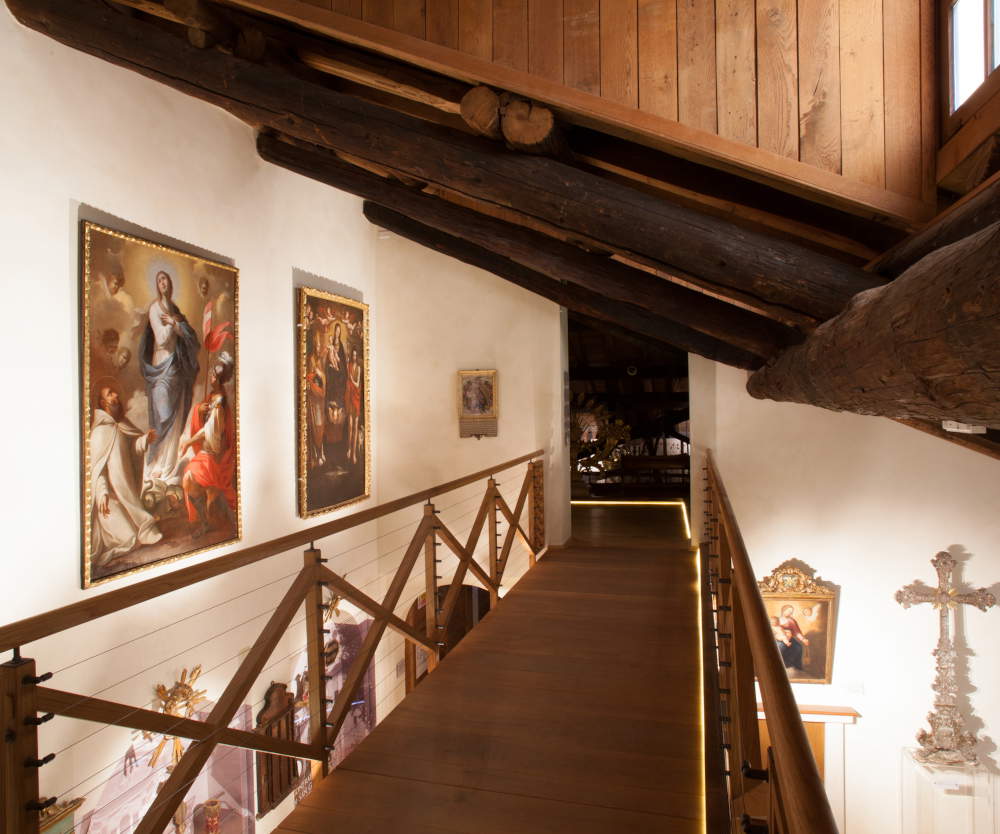
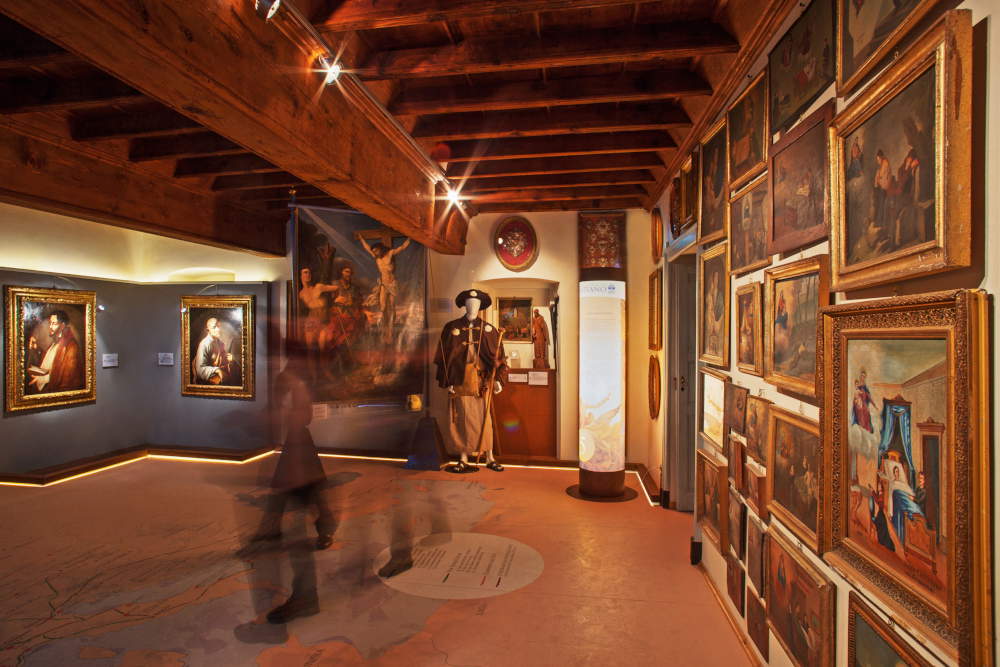
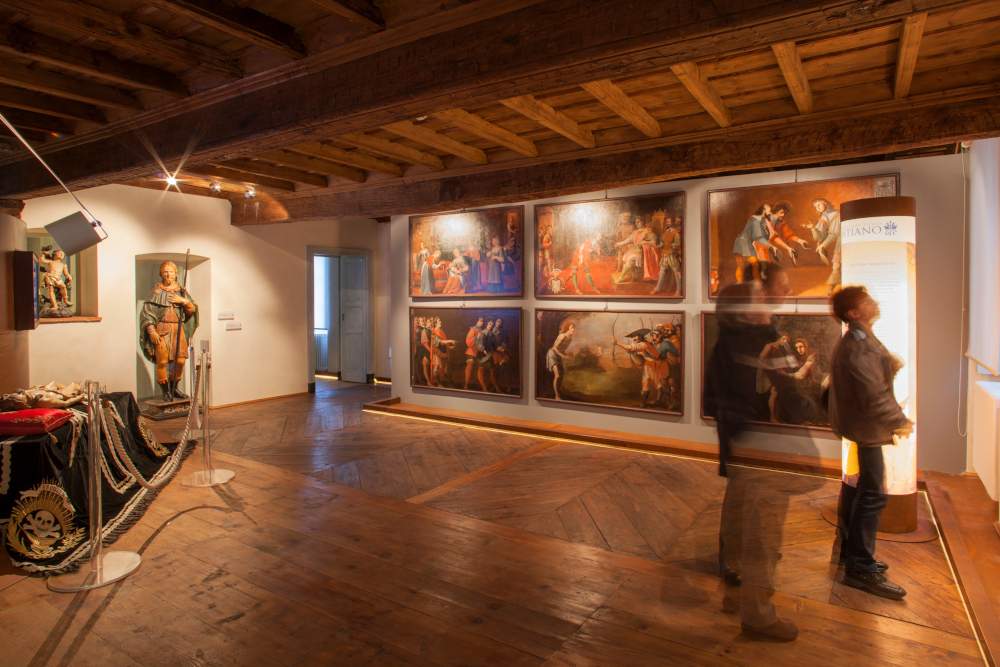
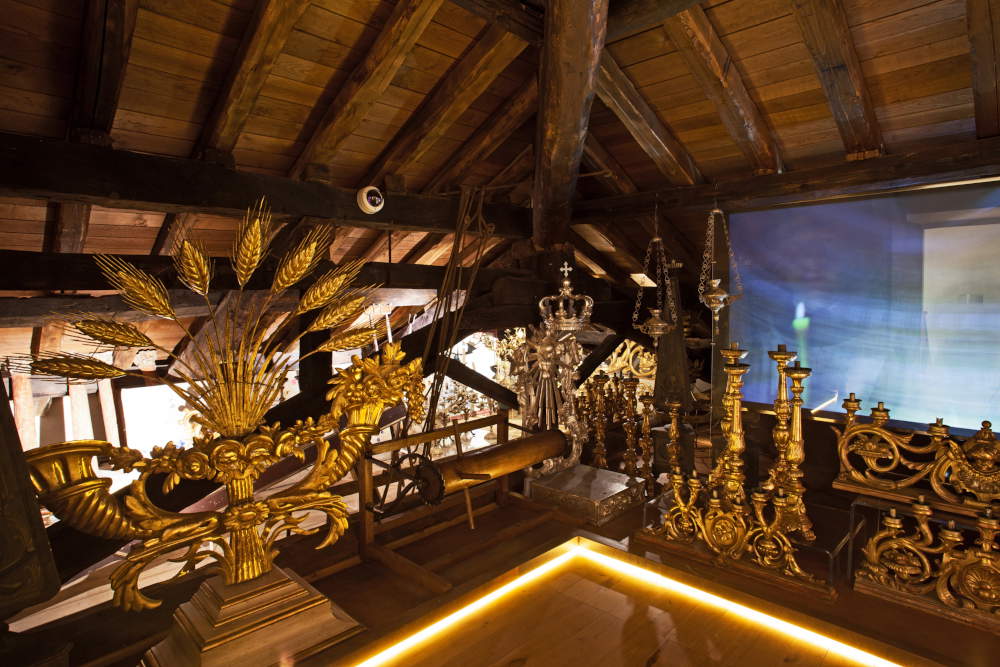
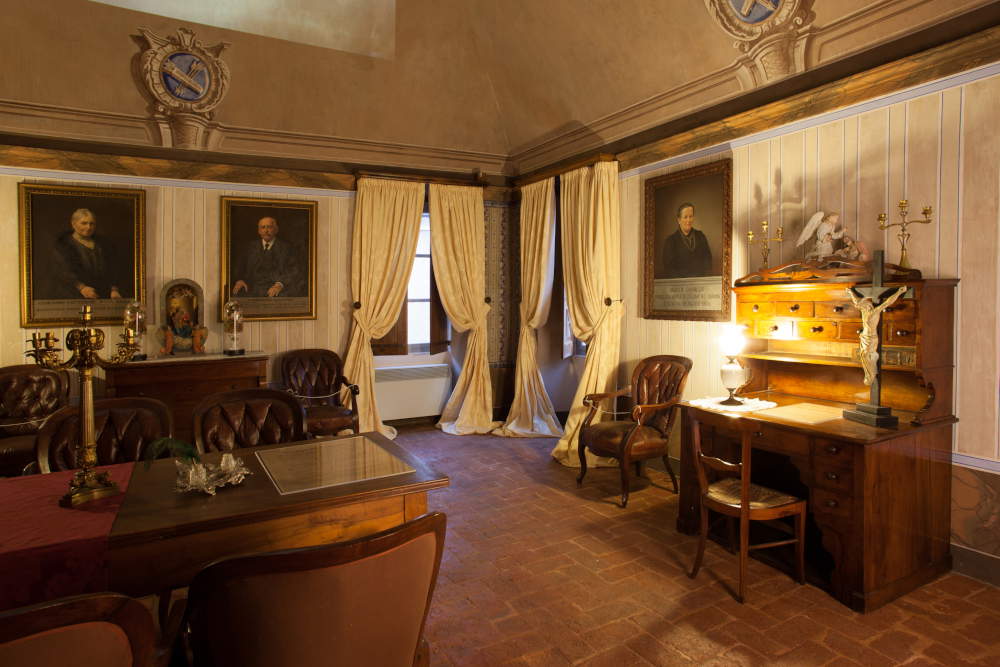
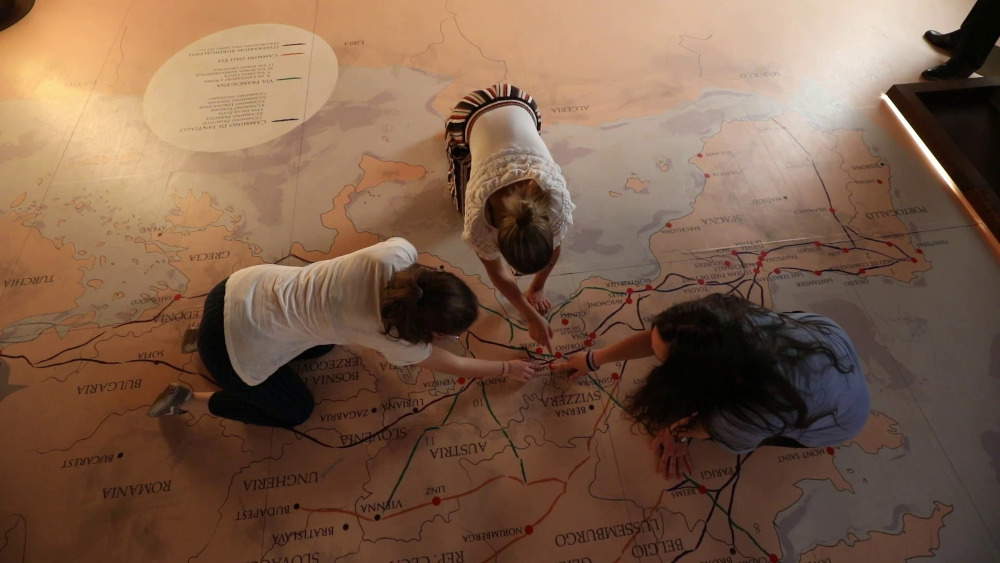 Escape
Escape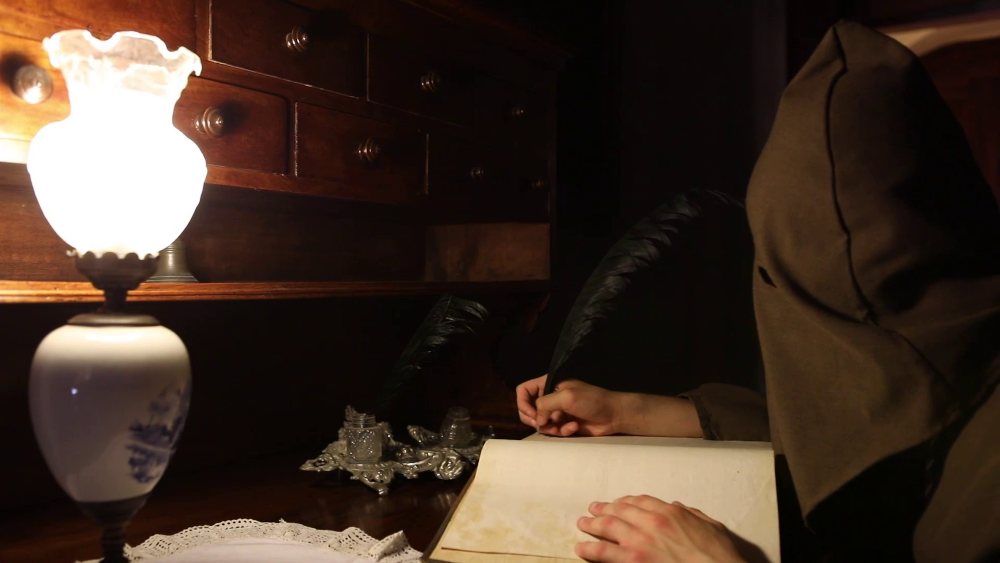
 |
| The Diocesan Museum of Cuneo turns 10 years old. Its history and what to see |
Warning: the translation into English of the original Italian article was created using automatic tools. We undertake to review all articles, but we do not guarantee the total absence of inaccuracies in the translation due to the program. You can find the original by clicking on the ITA button. If you find any mistake,please contact us.